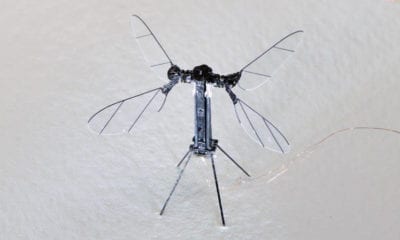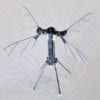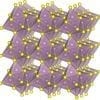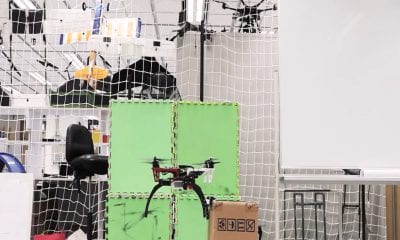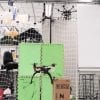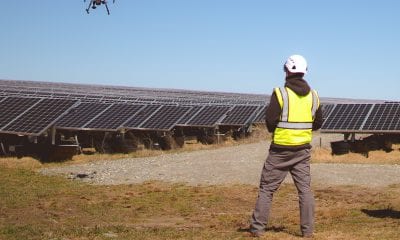
News
Ionic Wind Plane Makes ‘Historic’ First Flight
A nearly silent, drone-sized aircraft has shown it can fly, thanks to a scientist who was inspired by watching Star Trek as a child. With neither propellers nor jets, the airplane gets its thrust by applying a strong electric field to the air.
A team of experts from the Massachusetts Institute of Technology managed to unlock a process known as electro-aerodynamics. The team led by Prof Barrett designed and successfully test flew a small aircraft using technology that isn’t propelled by moving parts or fossil fuels, reports an editorial in the journal Nature. The researchers reported 10 test flights inside an MIT athletic building with a wingspan of about 5 metre, the 2.45-kilogram plane sailed along at about 17 km/h. Each flight covered about 55 meters.
How it Works
At first glance, the plane itself doesn’t look light years away from other renewable aircraft, such as the Solar Impact II craft that in 2015-16 used energy from the Sun to fly around the world.
Unlike Solar Impact, Barrett’s plane lacks any propellers or solar panels or any movable parts. It is instead powered by a system comprising two main sections. At the front of the plane sit a series of parallel electrodes made up of lightweight wires that produce an enormous voltage — +20,000v — supercharging the air around it and splitting away negatively charged nitrogen molecules known as ions.
At the plane’s rear are rows of aerofoils set to -20,000v. The ions automatically move from a positive to negative charge, dragging with them air particles that create the so-called “ionic wind” to provide the aircraft with lift.
“As they flow they collide with air molecules transferring momentum to them. This is how the thrust is generated,” Professor Barrett explained. “This is the first time we’ve achieved level flight with an aeroplane — which is a heavier-than-air flying vehicle,” Barrett added.
He also said it was unclear how much the technology could be scaled up — or down — but it could have applications for aircraft where stealth is an advantage. “The nearest term application would be for fixed-wing drones that have wing spans of a few metres to perhaps 20 metres,” Barrett said.
Commercial Applications
Barret clarified, “I don’t yet know if you’ll see our vehicle carrying people any time soon but obviously I’d be very excited if that was the case.” He said that the technology could be used on the skin of commercial aircraft, reducing drag and therefore the energy needed to power modern passenger jets. “This would be much more efficient than the current situation where you have concentrated engines that generate thrust, which have to fight against a large passive airframe that generates drag,” he elaborated.
A hundred and fifteen years ago, Nature published a short news item on the Wright brothers’ “first successful achievement of artificial flight.” Barrett and the team noted a pleasing parallel with their revolutionary test and the one that sparked the aerial age: both flights lasted all of 12 seconds.
The lack of noise would be an advantage in urban environs making them less bothersome to people on the ground, Barrett said.
“I think they’re onto something here,” said Pat Anderson, a professor of aerospace engineering at the Daytona Beach, Florida, campus of Embry-Riddle Aeronautical University. He had no role in the research.
“It’s clearly very early days: but the team at MIT have done something we never previously knew was possible, in using accelerated ionised gas to propel an aircraft,” said Guy Gratton, aerospace engineer and visiting professor at Cranfield University, who was not involved in the study.
The accompanying Nature editorial, listed possible military applications including the development of silent drones and aircraft, adding that engines with no infrared signal meant they would be impossible to detect.
Professor Barrett and his team will continue to tweak the craft to make it more efficient and quieter.

